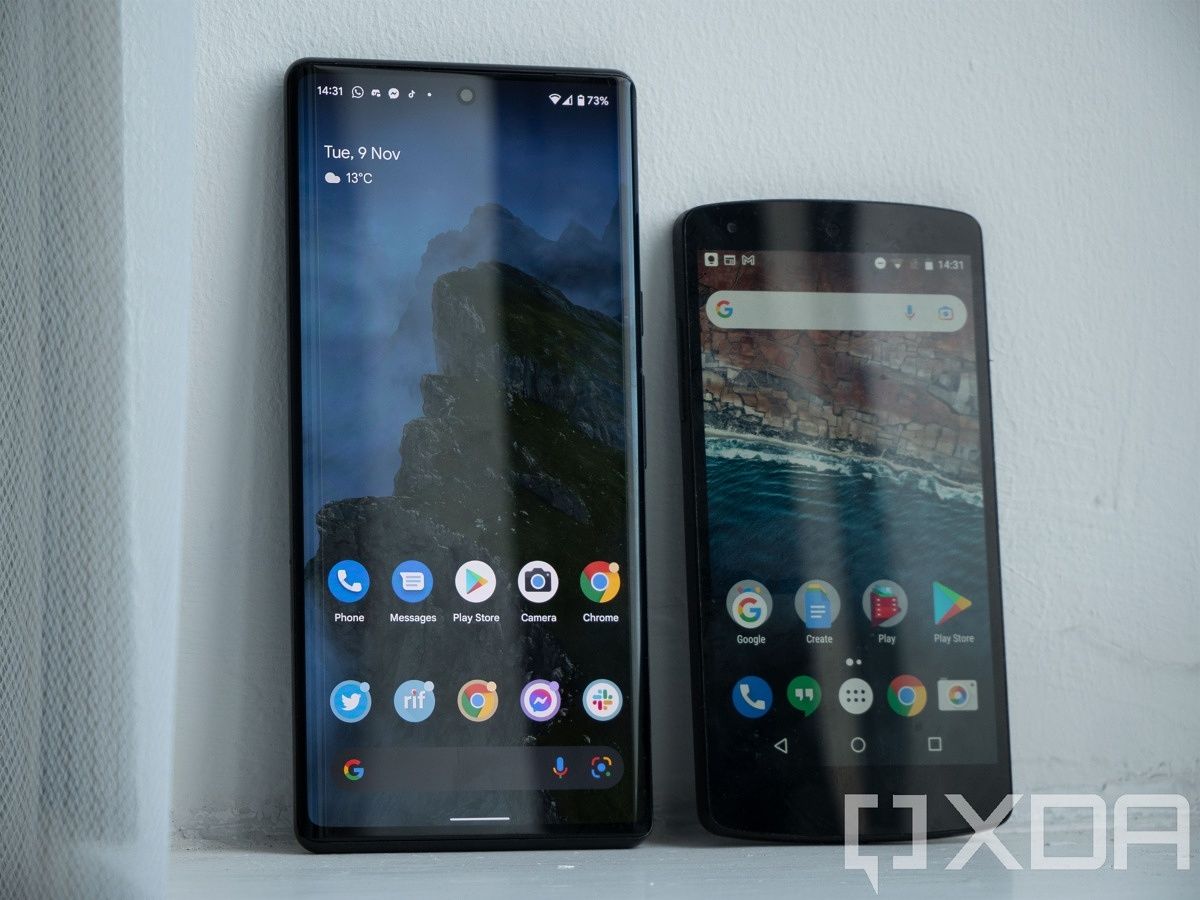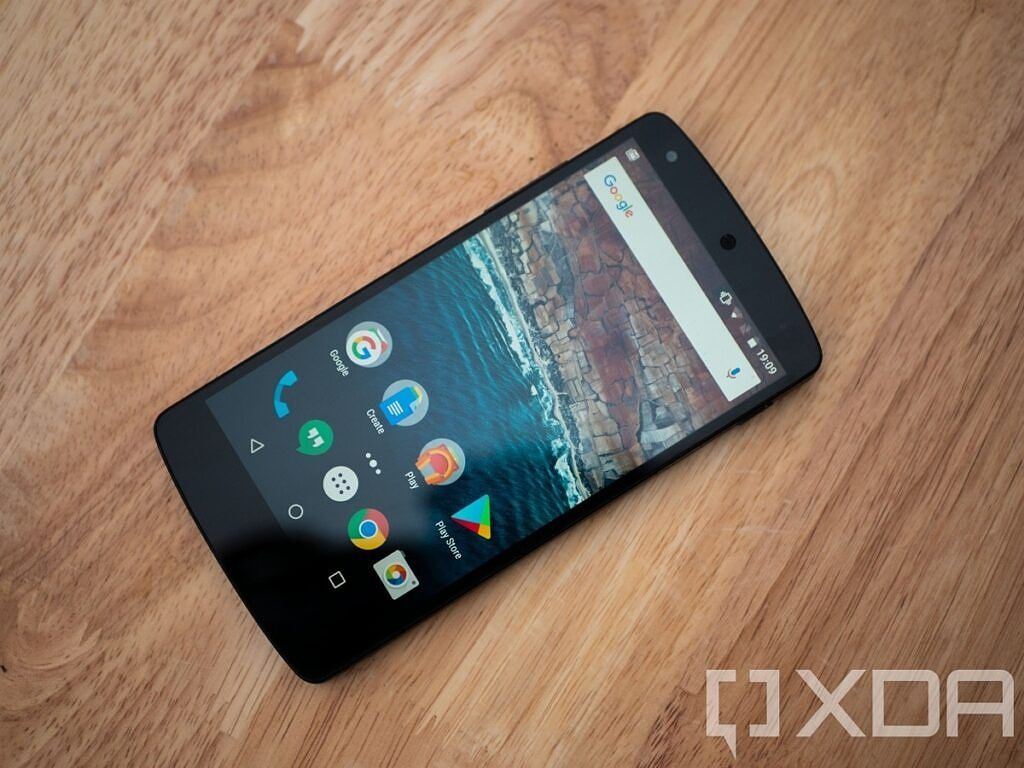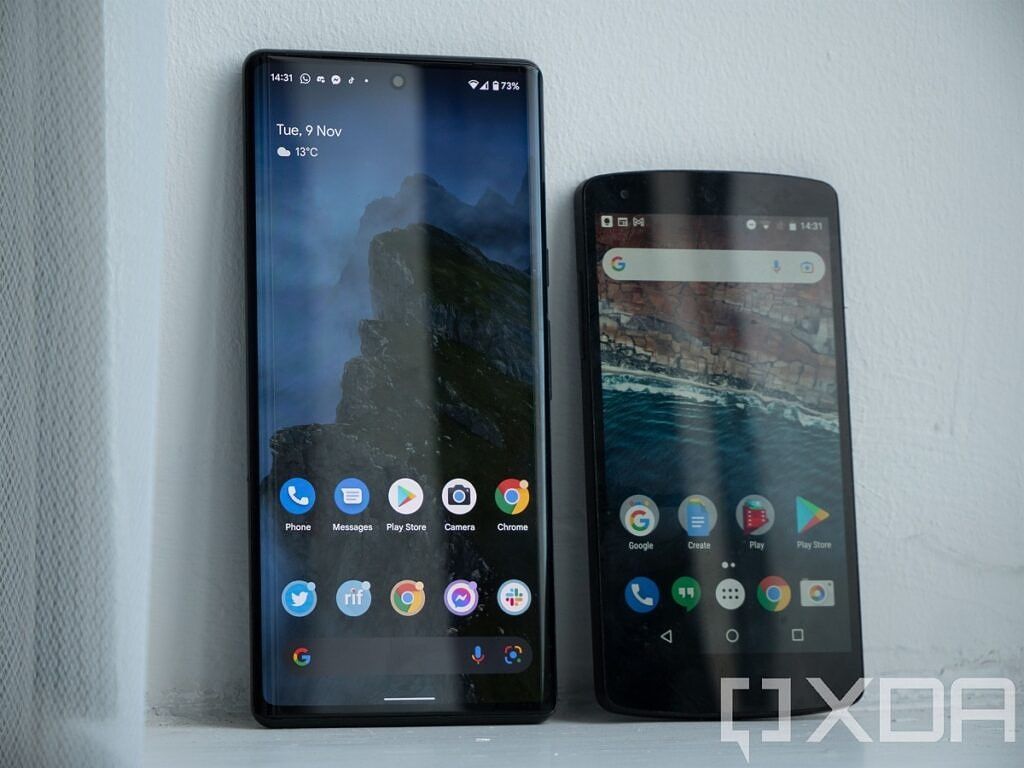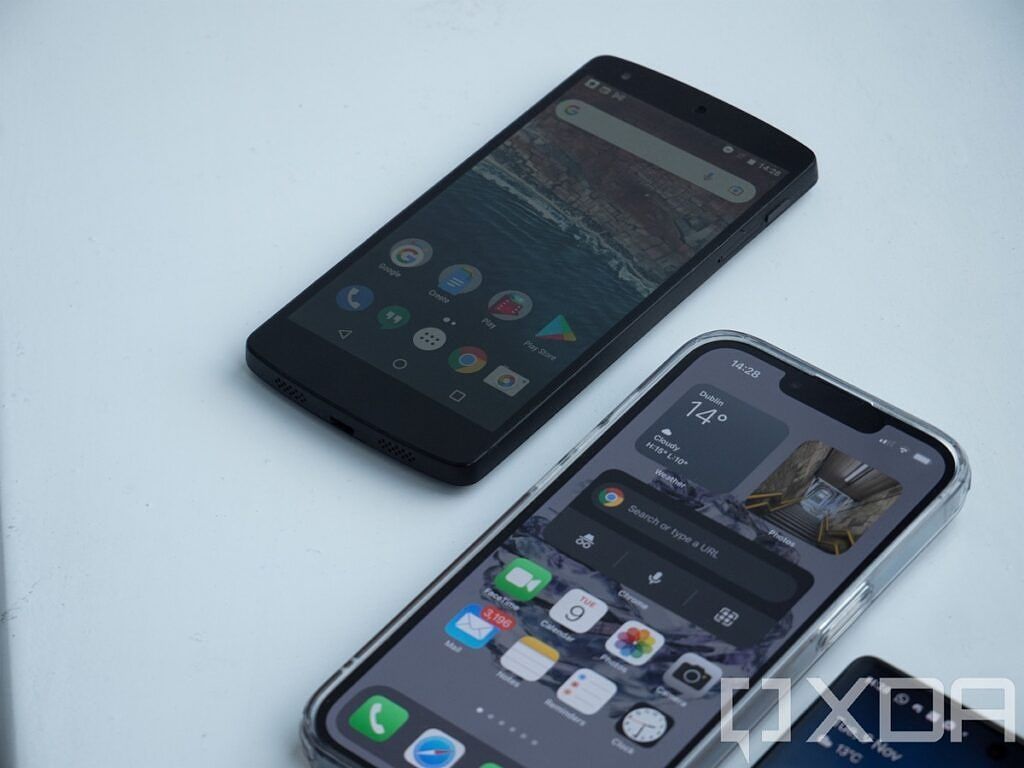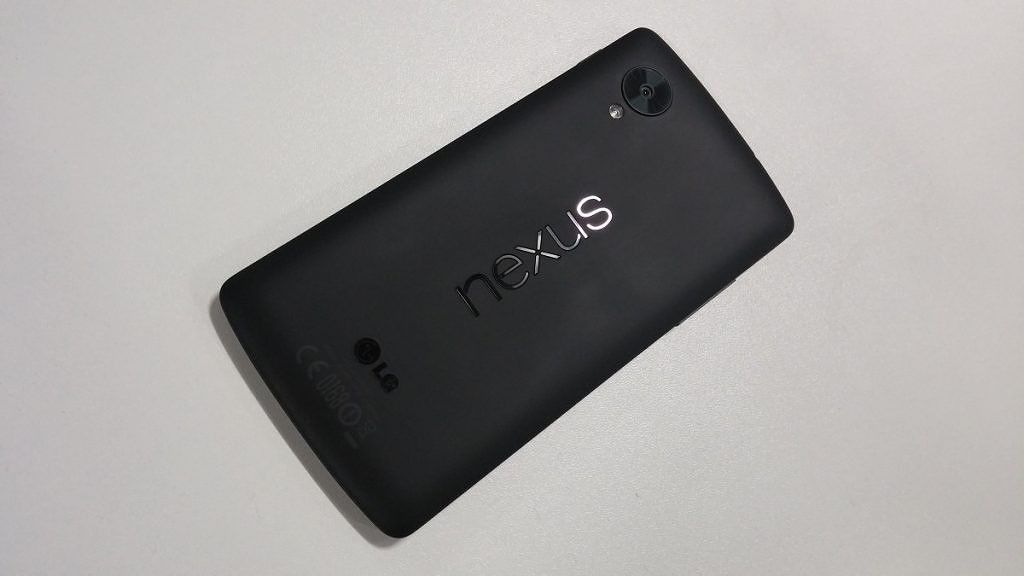The Google Nexus 5 was my first real introduction to the true world of smartphone modding, and maybe it was for you too. An easily unlocked bootloader, a litany of custom ROMs to choose from, and a thriving community filled with like-minded smartphone enthusiasts made this phone my ingress to the XDA-Developers forums. I had dabbled in the past with devices like the HTC Desire C and the Vodafone Smart, but the Nexus 5 was different. The Nexus 5 was special.
At the time, I had to make a choice -- the snippy new kid on the block, the OnePlus One, or the Nexus 5. I'll admit that I tried to hop on the OnePlus hype train, but the invite system made it impossible for me to get one. Instead, I went for the Nexus 5, and it was one of the best tech purchases I have ever made.
The Nexus 5 was manufactured by LG (and had many similarities to the LG G2) and featured the Qualcomm Snapdragon 800, 2GB of RAM, a 4.95-inch 1080p IPS LCD, and up to 32GB of internal storage. This phone, at the time, was one of the best no-frills devices on the market thanks to its free-of-bloat software and lower relative price tag. It wasn't without its faults, that's for sure, and its camera and battery life were both woefully poor when compared to the competition.
How the Google Pixel 6 Pro learned from the last great Nexus
The Nexus 5 was built upon groundwork set by the Nexus 4, and it was a huge hit amongst the enthusiast community. Towards the end of the Nexus 5's lifecycle is when it was clear that Google was beginning to work towards selling phones to consumers instead of developers. That's the thing when it comes to the Nexus series; it was initially aimed at developers, not consumers. They weren't available in carrier stores and they could only be purchased online from Google's store.
However, the Nexus 5 is likely what started Google on its Pixel journey. With this particular smartphone, Google launched its HDR+ algorithm as a Nexus exclusive. Google began to iterate upon this algorithm with each generation, with the company's camera smarts culminating in what became known as Google Camera. The foundations for the Google Pixel 6 Pro camera that we use today had their humble beginnings in the Nexus 5, improving over years.
Back then, the Nexus 5 was heralded for its close-to-stock Android experience. It was very close to AOSP, and again, that's because it was aimed at developers. Developers didn't want all the extra flourish that OEMs added, and the likes of TouchWiz from Samsung were what developers wanted to avoid. As Google pivoted towards offering a more consumer-centric device, these core values were carefully considered, as it was still a reason that some consumers (such as myself) would choose to purchase a Nexus device instead of any other offering. Now Pixel smartphones look pretty close to stock, sure, but they have a ton of additional features that aren't present in AOSP.
In fact, with every major Android platform update comes a discussion as to whether or not some features are Pixel-exclusive. Google typically doesn't identify which features are Pixel-exclusive, leaving it up to device owners to spot whether or not a feature has seemingly been omitted on another Android 12 device versus a Pixel. The only recent exception I can think of is the introduction of "Recents URL sharing" in Android 12, which Google identifies as a Pixel-exclusive feature in the Android developer documentation. Google hasn't even named its flavor of Android yet, choosing to blissfully take advantage of the ignorance between "Android" and "Google's Android". Google's Android is for sure not AOSP at this stage.
Digressions aside, Pixel smartphones are still the closest to that old Nexus experience, and comparing the Nexus to the Pixel 6 Pro reveals just how much has changed for Google over the years. The Pixel 6 Pro offers a near bezelless experience with a glass front and back and a squared-off design. In contrast, the Nexus 5 has a rounded top and bottom with massive bezels, though that was nothing to balk at back when it was released. The design of the Nexus 5 is very much a dated one.
The Nexus 5 was, weirdly, a pivotal moment for Google's smartphone business. At the time of its launch, there were questions surrounding the Nexus lineup and its viability, with the Nexus 4 having been cited as selling fewer than 400,000 units in its first three months. The Nexus 6, followed by the Nexus 5X and the Nexus 6P launched as successors to the Nexus 5 before the company culled the Nexus line and revealed the original Pixel smartphone in 2016.
Comparing the Nexus 5 to the latest Pixel is a weird experience. The Pixel Launcher is clearly an evolution of the launcher on the Nexus, and the Google Camera app has clearly grown over the years. Around this time is also when Google began to swap out the AOSP version of apps like the Dialer and Messages for its own proprietary apps in the Google Dialer and Hangouts.
The reason I call this the last great Nexus is for a number of reasons, though I would entertain a discussion as to whether the Nexus 6P was the greatest Nexus or not. As for the Nexus 6, it was too large and cost nearly twice the price of the Nexus 5. The Nexus 6P was plagued by a ton of hardware issues that resulted in both Google and Huawei paying a settlement fee.
The iPhone influence
The iPhone is in a unique position when it comes to its development process, and Apple tends to set a lot of the trends for the coming year with each and every release. However, Pixel smartphones can enjoy some of that same uniqueness, too.
Apple controls the chipset, the software, and the hardware, designing the smartphone and the operating system effectively in tandem. The Nexus series of smartphones is something that manages to pull off a bit of the same too, though with the caveat that the chipset was typically made and sold by Qualcomm. The software is obviously made by Google, and the hardware was chosen by Google too but manufactured by partners. Nexus smartphones, way back in the day, were the only way to get a "true" Android experience, particularly when compared to the likes of what other manufacturers at the time were offering.
Nowadays, this statement has only become even more true of the Pixel series, and Google has doubled down on that philosophy. With the advent of Google Tensor, it's a step even closer towards making the Pixel series an iPhone competitor. Google is no longer at the behest of Qualcomm and instead seems to be working alongside Samsung on not only Google Tensor, but potentially its successor, too. There are obviously a number of issues with Tensor that we've faced, but it's likely that we'll see improvements in future Google silicon.
The state of custom ROMs
The Nexus 5 was a boon for custom ROMs and was my true introduction to smartphone modding. The forums were filled to the brim with active custom kernels, ROMs, and other modifications. While things have certainly slowed down, there's an unofficial build of LineageOS 17 on the forums, meaning that users can get Android 11 pretty easily. The Nexus 5 was as open as it gets, and plenty of users got their money's worth if they were buying a smartphone for modding.
Have there been any true successors to the Nexus series? The closest I can think of is OnePlus. While not really a favorite of enthusiasts anymore, they're still the most open devices on the market that you can easily get. You can buy a OnePlus 9 or OnePlus 9 Pro, unlock the bootloader, and choose from a number of ROMs on our forums to install on it if you'd like. Not many devices allow that level of access or simplicity.
Is there a need for another Nexus?
It's hard to say whether we actually need another Nexus, as it seems that it lived its purpose. It was a device aimed at developers and offered the most "pure" Android experience in system behavior, and the Pixels still mostly provide that. Thanks to the likes of the Compatibility Definition Document and other requirements that Google places on Android partners, it's no longer quite the wild west it once was.
No matter what though, it's likely that some developers feel like they're missing out on the pure Android experience. The best you can currently get is a Generic System Image, though those are incredibly barebones, and not all that stable on some devices, either. If what you're after is a device for development, then a Pixel 6, the spiritual successor to the Nexus line, is likely the best that you can get.

Google Pixel 6
The Pixel 6 comes with Google's new Tensor chip, a modern design, and flagship cameras.

Google Pixel 6 Pro
The Pixel 6 Pro is the larger sibling that comes with Google's new Tensor chip, a modern design, and an extra telephoto camera.

